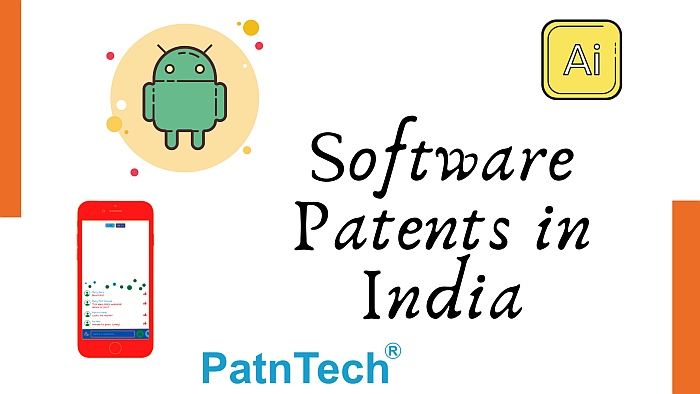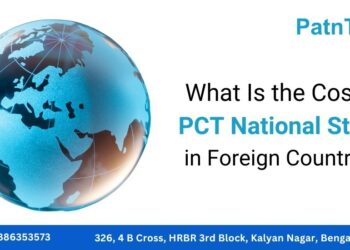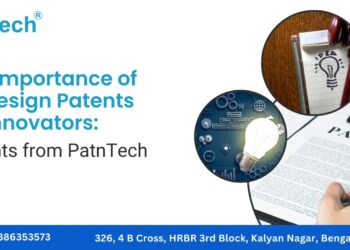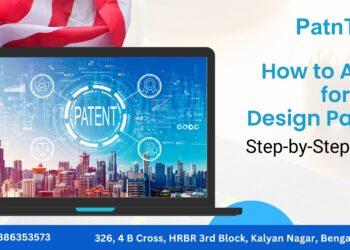How To Get A Patent For Software In India
- November 4, 2020
- Posted by: Patntech
- Categories: Blog, Patents


It is no secret that Indian Patent Act does not grant software patents per se. But it is also not a secret that Indian Patent Office (IPO) still grants patents related to software. In the very words of IPO, it is called Computer Related Inventions (CRI) and not software patents. I highlighted the word per se; because there is no substantial clarification provided on the use of the word. However, the objective of Indian Patent Act is that the inventions would not be rejected only because it is based on a computer program.
Before I dwell into details, let me discuss what software patent is in general and then the Indian scenario. The term software patent does not have a worldwide accepted definition. As suggested by the Foundation for a Free Information Infrastructure, a software patent is a “patent on any performance of a computer realized by means of a computer program.” According to Richard Stallman, the co-developer of the GNU-Linux operating system -“Software patents are patents which cover software ideas, ideas which you would use in developing software.” In Indian scenario, Software patents can be defined as the patents which are granted for inventions which consist of hardware components incorporating a computer programme as its significant part thereby imparting technical application in any industry.
The software patents in general can be categorized into: Mathematical methods, Business method, Algorithms, and Computer programmes. Mathematical methods include method of calculation, formulation of equations, finding square roots, cube roots etc. Business methods include method of doing business and business activities with technical features such as internet, networks, satellites, telecommunications etc. Algorithms in all forms, which include a set of rules or procedures or any sequence of steps or any method expressed by way of a finite list of defined instructions, whether for solving a problem or otherwise, and whether employing a logical, arithmetical or computational method. Computer programmes include computer programmes per se stored in a computer readable medium.
With that briefing, let me discuss the requirements for patenting software inventions in India. As many of the readers are aware of different types of claims that can be presented and the semantics to be used in a patent application, I would not discuss much about them. But at the very least, once can claim a method/process, Computer readable medium, and system/apparatus claim for the software.
When claiming a computer related invention, the claims should clearly describe the steps involved in solving a technical problem bringing out technical effect. Further, the claims should also involve a hardware or machine implementation/limitation and should clearly differentiate the invention from the prior art. Although there is no Official manual available for Indian patent examiners to analyze the technical problem and the technical effect, IPO considers them to be in line with the European Patent Office (EPO). This is pretty much applied for all type of claims.
Now you may ask what technical features in computer related inventions are. It is typically the components of the apparatus, the components of the program, the functional interaction between them, and processes within the computer. In other words, the hardware itself, or the network, or the functional program modules and their location on the network, tables, pre-stored data, their structure and location on the network, or the structure of user interface or the data structures received, stored, processed and output obtained, are considered to have technical features. After showing that the CRI corresponds to any one of the above technical features, one must also show that the solution provided in the claimed invention solves a technical problem. We have to also show that the invention brings out the technical effect. Examples of the technical effect are higher speed of processing, reduced hard-disk access time, more economical use of memory, more efficient database search strategy, more effective data compression techniques, improved user interface, better control of robotic arm, and improved reception/transmission of a radio signal.
One major issue still exists for the inventions related to the business methods. To give a short brief, the inventions involving monetary transaction, online advertising, and profit/loss are considered as business methods. To further clarify, methods which involve monetary transaction or mere marketing or sale purchase methodology and the activities such as tracking, and/or estimating certain business metrics using permutations of factors like return on investment and/or profit value with respect to advertising campaigns to manage the online advertising and accordingly to decide the investment are purely business oriented. IPO outrightly rejects the patent applications involving such methods. Even if the method relating to business provides a technical solution using technical means to the technical problem, IPO will reject the application as it falls under business method patents.
In order to overcome the above rejections, the claims presented should clearly emphasize on technical means to solve a technical problem in combination of hardware and computer programme which can differentiate the invention with prior art. For business methods, one should take care to use terminology that does not relate to business, at least on the face of it. When claiming a system and method for an invention, the claims should be supported by description, diagrams and working of such interconnection of the elements as specified in the claims. Use as many flowcharts as possible to overcome any rejections that pertains to lack of description showing the resultant technical effect.
Also Read: How to patent mobile applications in India
Provisional and Complete Patent Application
Author: Chandrasekhar Raju
AIPPI World Congress, Yokohama, Japan
We are pleased to share that PatnTech’s Managing Partner, Mr. Chandrasekhar Raju, attended the AIPPI World Congress held in Yokohama, Japan, from September 13–16, 2025.
October 1, 2025What Is the Cost of PCT National Stage in Foreign Countries?
The Patent Cooperation Treaty (PCT) simplifies patent protection for companies and inventors worldwide
August 6, 2025The Importance of US Design Patents for Innovators: Insights from PatnTech
In today’s competitive marketplace, innovation drives success, and protecting those innovations is crucial.
July 21, 2025How to Apply for a US Design Patent: Your Step-by-Step Guide
A US design patent protects the unique ornamental design of an article of manufacture. It helps businesses and inventors safeguard their innovative creations.
July 10, 2025




